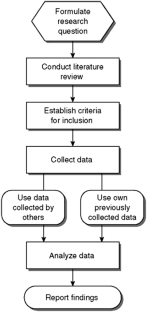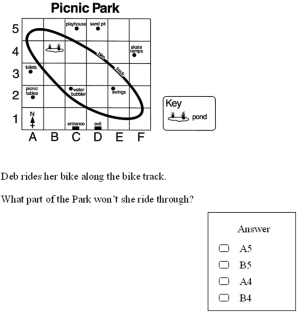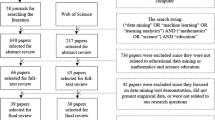Abstract
Secondary data analysis in educational research has been an established research method for many years. Yet, few publications outline the “how to” of undertaking the process. This paper presents an analysis framework suitable for undertaking secondary data analysis within the field of education. The framework is a modification and an application of a pre-existing data mining research process known as Knowledge Discovery in Databases (KDD). The KDD process is interactive and generative and involves a series of sequential steps and decision-making processes. The modified KDD process is described to show how it supports secondary data analysis and provides an example of how the modified KDD process was applied across a secondary analysis in mathematics education. This paper provides educational researchers with a practical and iterative framework through which to undertake secondary analysis that enhances flexibility and encourages depth and saturation.
Similar content being viewed by others
References
Attwood, G., & Croll, P. (2011). Attitudes to school and intentions for educational participation: An analysis of data from the Longitudinal Survey of Young People in England. International Journal of Research and Method in Education,34(3), 269–287.
Australian Government. (2013). Australian Research Council Discovery Projects—Instructions to applicants for funding commencing in 2015. Resource document. Australian Research Council. Retreived from http://www.arc.gov.au/pdf/DP15/DP15_ITA.pdf.
Bishop, L., & Kuula-Luumi, A. (2016). Revisiting qualitative data reuse: A decade on. SAGE Open. https://doi.org/10.1177/2158244016685136.
Bobis, J., Shore, S., Bennett, D., Bennett, S., Chan, P., Harrison, N., et al. (2013). Educational research in Australia: Where is it conducted? Australian Educational Researcher,40(4), 453–471.
Borgman, C. L. (2012). The conundrum of sharing research data. Journal of the American Society for Information Science and Technology,63(6), 1059–1078.
Brewer, E. W. (2007). Secondary data analysis. In N. J. Salkind & K. Rasmussen (Eds.), Encyclopedia of measurement and statistics (pp. 870–877). Thousand Oaks: SAGE Publications Inc.
Burstein, L. (1978). Secondary analysis: An important resource for educational research and evaluation. Educational Researcher,7(5), 9–12.
Cabena, P., Hadjinian, P., Stadler, R., Verhees, J., & Zanasi, A. (1998). Discovering data mining: From concept to implementation. Englewood Cliffs, NJ: Prentice Hall.
Carter, J., Noble, S., Russell, A., & Swanson, E. (2011). Developing statistical literacy using real-world data: Investigating socioeconomic secondary data resources used in research and teaching. International Journal of Research and Method in Education,34(3), 223–240.
Chen, M. S., Han, J., & Yu, P. S. (1996). Data mining: An overview from a database perspective. IEEE Transactions on Knowledge and Data Engineering, 8(6), 866–883.
Cheng, H. G., & Phillips, M. R. (2014). Secondary analysis of existing data: Opportunities and implementation. Shanghai Archives of Psychiatry,26(6), 371–375.
Cheshire, L. (2009). Archiving qualitative data: Prospects and challenges of data preservation and sharing among Australian qualitative researchers. Discussion Paper. http://www.assda.edu.au/forms/AQuAQualitativeArchiving_DiscussionPaper_FinalNov09.pdf.
Colonna, L. (2013). Taxonomy and classification of data mining. SMU Science and Technology Law Review,16, 309–369.
Corti, L., & Fielding, N. (2017). Opportunities from the digital revolution: Implications for researching, publishing and consuming qualitative research. SAGE Open. https://doi.org/10.1177/2158244016678912.
Devine, P. (2003). Secondary data analysis. In R. L. Miller & J. D. Brewer (Eds.), The A-Z of social research (pp. 286–289). London: SAGE Publications Ltd.
Economic and Social Research Council (ESRC). (2010). ESRC Research Data Policy (updated 2013). Resource document. Retrieved from http://www.esrc.ac.uk/_images/Research_Data_Policy_2010_tcm8-4595.pdf.
Fayyad, U. M. (1996). Data mining and knowledge discovery: Making sense out of data. IEEE Intelligent Systems,11(5), 20–25.
Fayyad, U. M., Piatetsky-Shapiro, G., & Smyth, P. (1996). From data mining to knowledge discovery in databases. AI Magazine,17(3), 37–54.
Goodwin, J. (2012). Editor’s introduction: Secondary sources and secondary analysis. In J. Goodwin (Ed.), SAGE secondary data analysis (Vol. 1, pp. xix–xxxvii). London: SAGE.
Hakim, C. (1982). Secondary analysis and the relationship between official and academic social research. Sociology,16(1), 12–28.
Hammersley, M. (2010). Can we re-use qualitative data via secondary analysis? Notes on some terminology and substantive issues. Sociological Research Online. https://doi.org/10.5153/sro.2076.
Hand, D. J. (1998). Data mining: Statistics and more? The American Statistician,52(2), 112–118.
Hofferth, S. L. (2005). Secondary data analysis in family research. Journal of Marriage and Family,67(4), 891–907.
Houghton, J., & Gruen, N. (2014). Open research data: Report to the Australian National Data Service (ANDS). Resource document. Retrieved from http://ands.org.au/resource/open-research-data-report.pdf.
Irwin, S., Bornat, J., & Winterton, M. (2012). Timescapes secondary analysis: Comparison, context and working across data sets. Qualitative Research,12(1), 66–80.
Kolb, B. (2008). Marketing research: A practical approach. London: SAGE Publishing.
Logan, T. (2015). Starting a conversation about open data in mathematics education research. In M. Marshman, V. Geiger & A. Bennison (Eds.), Mathematics education in the margins. Proceedings of the 38th annual conference of the mathematics education research group of Australasia (pp. 373–380). Sunshine Coast, Australia: MERGA Inc.
Logan, T., & Lowrie, T. (2017). Gender perspectives on spatial tasks in a national assessment: A secondary data analysis. Research in Mathematics Education, 19(2), 199–216. https://doi.org/10.1080/14794802.2017.1334577.
Logan, T., & Woodland, K. (2015). Digital games and mathematics learning: The state of play. In T. Lowrie & R. Jorgensen (Eds.), Digital games and mathematics learning: Potential, promises and pitfalls (pp. 277–304). The Netherlands: Springer.
Logan, T., Lowrie, T., & Diezmann, C. M. (2014). Co-thought gestures: Supporting students to successfully navigate map tasks. Educational Studies in Mathematics, 87, 87–102. https://doi.org/10.1007/s10649-014-9546-2.
Lowrie, T. (2014). An educational practice framework: The empowerment of the teaching profession. Journal of Education for Teaching,40(1), 34–46.
Mariscal, G., Marbán, O., & Fernández, C. (2010). A survey of data mining and knowledge discovery process models and methodologies. The Knowledge Engineering Review,25(2), 137–166.
McNeill, D. (1992). Hand and mind: What gestures reveal about thought. Chicago, IL: University of Chicago Press.
Miles, M. B., & Huberman, A. M. (1984). Drawing meaning from qualitative data: Toward a shared craft. Educational Researcher,13(5), 20–30.
Morris, D., & Ecclesfield, N. (2011). A new computer-aided technique for qualitative document analysis. International Journal of Research and Method in Education,34(3), 241–254.
National Health and Medical Research Council. (2018). Australian code for responsible conduct of research. Canberra, Australia: Author. Retrieved from https://nhmrc.gov.au/about-us/publications/australian-code-responsible-conduct-research-2018#block-views-block-file-attachments-content-block-1.
National Science Foundation (NSF). (2010). NSF Data Sharing Policy. Resource document. Retrieved from http://www.nsf.gov/bfa/dias/policy/dmp.jsp.
Olesen, S. (2014). Publishing and sharing sensitive data. Australian National Data Service Guides. Resource document. Retrieved from http://ands.org.au/guides/sensitivedata.html.
Onwuegbuzie, A. J., & Johnson, R. B. (2006). The validity issue in mixed research. Research in the Schools,13(1), 48–63.
Organisation for Economic Co-operation and Development (OECD). (2007). OECD principles and guidelines for access to research data from public funding. Paris, OECD. Resource document. Retrieved from http://www.oecd.org/sti/sci-tech/38500813.pdf.
Payne, G., & Payne, J. (2004). Key concepts in social research. London: SAGE Publications.
Pyle, D. (1999). Data preparation for data mining. San Francisco, CA: Morgan Kaufmann.
Queensland School Curriculum Council. (2001). 2001 Queensland year 5 test: Aspects of numeracy (p. 2). Brisbane, Australia: Queensland School Curriculum Council.
Raven, J., Raven, J. C., & Court, J. H. (1998). Manual for Raven’s standard progressive matrices. Oxford: Oxford Psychologists Press.
Rew, L., Koniak-Griffin, D., Lewis, M. A., Miles, M., & O’Sullivan, A. (2000). Secondary data analysis: New perspectives for adolescent research. Nursing Outlook,48(5), 223–229.
Romero, C., & Ventura, S. (2013). Data mining in education. Wiley Interdisciplinary Reviews: Data Mining and Knowledge Discovery,3(1), 12–27.
Rowan, M., & Ramsay, E. (2018). Educational inequality in Tasmania: Evidence and explanations. Australian Educational Researcher,45(3), 277–295.
Smith, E. (2008a). Pitfalls and promises: The use of secondary data analysis in educational research. British Journal of Educational Studies,56(3), 323–339.
Smith, E. (2008b). Using secondary data in educational and social research. Maidenhead: McGraw Hill/Open University Press.
Smith, E. (2011). Special issue on using secondary data analysis in educational research. International Journal of Research and Method in Education,34(3), 219–221.
Smith, A. K., Ayanian, J. Z., Cobinsky, K. E., Landon, B. E., McCarthy, E. P., Wee, C. C., et al. (2011). Conducting high-value secondary dataset analysis: An introductory guide and resources. Journal of General Internal Medicine,26(8), 920–929.
Thompson, P. (2000). Re-using qualitative research data: A personal account. Forum: Qualitative Social Research. https://doi.org/10.17169/fqs-1.3.1044.
Wellcome Trust. (2010). Policy on data management and sharing. Resource document. Retrieved from http://www.wellcome.ac.uk/About-us/Policy/Policy-and-position-statements/WTX035043.htm.
Zhang, S., Zhang, C., & Yang, Q. (2003). Data preparation of data mining. Applied Artificial Intelligence,17, 375–381.
Author information
Authors and Affiliations
Corresponding author
Additional information
Publisher's Note
Springer Nature remains neutral with regard to jurisdictional claims in published maps and institutional affiliations.
Rights and permissions
About this article
Cite this article
Logan, T. A practical, iterative framework for secondary data analysis in educational research. Aust. Educ. Res. 47, 129–148 (2020). https://doi.org/10.1007/s13384-019-00329-z
Received:
Accepted:
Published:
Issue Date:
DOI: https://doi.org/10.1007/s13384-019-00329-z










